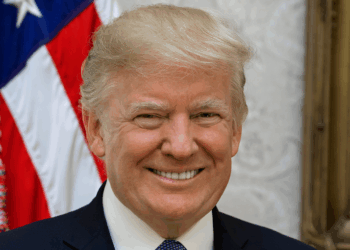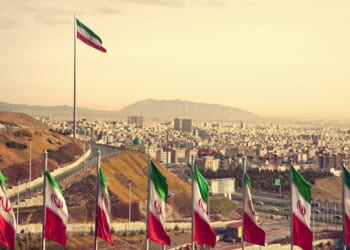The largest economy in the world is teetering on the edge of fiscal collapse. Our national debt now exceeds $37.5 trillion—and rising fast. That’s more than $324,000 for each American taxpayer. As we celebrate the United States’s 250th anniversary, interest on this debt is projected to reach over $1 trillion annually. This will surpass defense spending, threatening to crowd out every other federal priority.
While most politicians in both parties keep dancing around the issue, there is a simple solution hiding in plain sight: Privatize most of the land currently held by Uncle Sam. No, we are not talking about our national parks or protected forests. We mean the hundreds of millions of federally controlled acres that are unused, underutilized, or grossly mismanaged.
If we unlock this dormant wealth, we could dramatically reduce the national debt. We can address our young people’s most pressing concern: housing affordability. And we can spark a new era of American industrial growth. All those goals are achievable without raising a single tax or printing another dollar.
The federal government currently owns 640 million acres of land. That’s a huge asset—28% of the total landmass of the United States! In Utah, Idaho, and Alaska, the federal government is hoarding over 60% of the land. Less than a fifth of Nevada is privately owned, yet we call our system capitalism!
Much of this land is controlled by the Bureau of Land Management and U.S. Forest Service. A large portion of it is not protected wilderness, yet not actively leased. American land is simply off-limits to productive use, neither preserved as part of some environmental project nor developed to serve human needs.
Folks, it’s not about building Disneyland rides down the Grand Canyon, turning the redwood forests into toilet paper, or drilling for oil in Yellowstone. Much of America’s outback, however, could be repurposed for housing, farming, manufacturing, or energy production without losing any of our natural beauties. The economic potential of giving the land to the American people is enormous.
The idea of privatizing unused land with no previous owners is not radical. It’s deeply rooted in American history. In fact, this is how America was made. It was the foundation for the industrial boom that came a century later.
The Land Ordinance of 1785 and Northwest Ordinance of 1787 set the precedent for federal land sales to fund the Treasury and promote westward expansion. Later, the Homestead Act of 1862 gave away over 270 million acres (nearly 10% of U.S. land) to citizens willing to live and work on it.
For over a century, land was seen as a resource to empower individuals and strengthen the Republic. Like dragons perched on piles of gold, today’s bureaucracies have entrapped the extraordinary potential that could be realized.
The value of the unused mineral resources alone dwarfs our national debt. It may even pay for all the unfunded federal, state, and local liabilities. Not to mention that privatization would reduce the annual burden of federal land management, which costs billions in taxpayer dollars every year. The Department of the Interior by itself had a 2023 budget of $17.5 billion, much of it directed at land and resource management.
Beyond the immense mineral wealth, the privatization of the federal lands can solve much of our unprecedented housing affordability crisis. Home prices have skyrocketed, particularly in the West. New development in California is in short supply, not because land doesn’t exist, but because Uncle Sam sits on top of it. In many localities, this problem is further complicated by zoning restrictions and rent controls.
Releasing even a fraction of this land for residential development would unleash millions of new home sites, lower land prices, and create a housing boom akin to that of the post–World War II era. American citizens (homeowners and developers), not politicians and bureaucrats, should be the ones deciding how this land is used.
And land privatization isn’t just about homes, as important as they are for our children. The massive grassroots movement that re-elected Donald Trump demands industrial revitalization and energy dominance. American manufacturing is being suffocated by land-use restrictions. With so many untapped resources right here at home, bad policies have made us dependent on foreign suppliers for critical inputs such as rare earths.
During Trump’s first term in office, the Department of the Interior identified 35 minerals essential to U.S. economic and national security. We have abundant deposits of those on federally owned lands that are currently inaccessible for development. Selling or leasing these lands for responsible extraction would reduce our dependence on adversaries like the CCP. It would bolster domestic manufacturing and create high-paying jobs across the country.
There is no reason for the federal government to be the nation’s largest landlord. The Constitution grants Congress the power to dispose of property, not to indefinitely retain vast territories. Thomas Jefferson believed land ownership was a safeguard of liberty. Today we cannot justify enslaving our children with debt while the government sits on trillions in idle assets.
Yes, we must protect our fabulous national parks and historical landmarks for future generations. But the vast, unused stretches of federal land scattered across the American West? These are a liability and a lost opportunity.
We should audit all federal land holdings, categorizing them by use, value, and development potential. Any surplus land should be sold through transparent public auctions, with all proceeds going to debt reduction, not new spending. Let’s empower our states, local communities, and private entrepreneurs to take the lead in managing and developing these assets.
It’s time to return to our foundational principles: private property rights, fiscal responsibility for both the individual and the government, and liberty and business for all. By selling excess federal land, we can eliminate our debt, create new economic opportunities, and unleash the full potential of the American people.




![Hegseth Demands Fitness Requirements, Says 'Fat Troops' 'Not Who We Are' [WATCH]](https://teamredvictory.com/wp-content/uploads/2025/09/Hegseth-Demands-Fitness-Requirements-Says-Fat-Troops-Not-Who-We-350x250.jpg)






